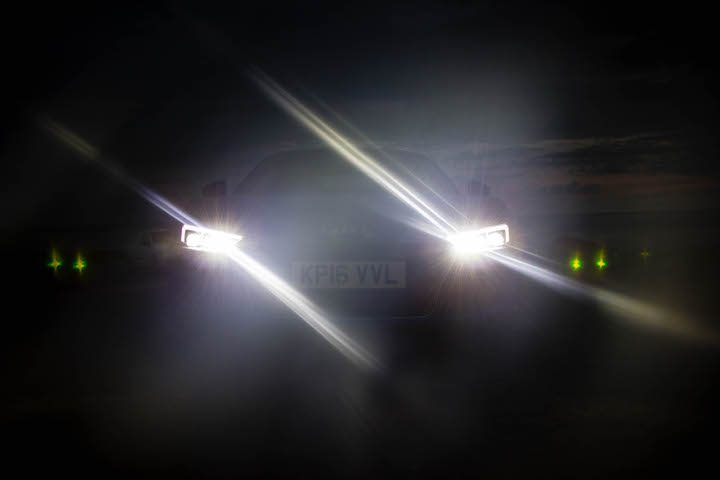Four-in-five drivers are concerned about getting dazzled by vehicle headlights with the arrival of darker evenings, new RAC research has found.
With the clocks having just gone back and the imminent publication of a government-commissioned report into headlight glare, the findings also show the brightness of some headlights is the top reason for feeling nervous when driving in the dark.
Of the four-in-10 respondents (38%) who said they are nervous about driving in the dark, three-quarters (75%) said it was because of bright headlights, compared to 63% who said spotting hazards is harder in the dark and 41% who said they can’t judge the speed of other vehicles as easily.
A third (33%) reported they are nervous about driving in the dark as they find judging the distance of other vehicles harder, while around a quarter (23%) say they just feel less confident driving at night.
Following a rise in complaints from drivers about getting dazzled the RAC began campaigning several years ago, along with The College of Optometrists, IAM RoadSmart and Baroness Hayter, for the causes of headlight glare to be investigated. This joint work led to the Government commissioning independent research, conducted by TRL, which is due to be published soon.
Comprehensive RAC research earlier this year found as many as one-in-four (25%) drivers who find vehicle headlights too bright are driving less as a result, with a further 22% saying they wish they could but that they have no choice other than to drive at night.
RAC senior policy officer Rod Dennis said, “Unfortunately, for a lot of drivers the annual onset of darker evenings coincides with another unwelcome arrival – that of overly-bright headlights that they believe make driving more difficult due to dazzle and discomfort.
“While most of us have no choice other than to adapt to driving at night more often as the clocks go back, the fact headlight glare is the leading cause of nervousness underlines it’s a problem that needs tackling. At the same time, it’s important to remember that brighter headlights can give drivers a better view of the road ahead – so there’s a balance to be struck.
“We look forward to the publication of the Government’s report and hope that it helps explain why so many drivers report struggling to cope with dazzling headlights – whether that’s due to changes in technology, the fact more of us than ever are driving vehicles that sit higher on the road, or for some other reason. We also hope it comes with recommendations that lead to road users feeling safer behind the wheel at night.”
IAM RoadSmart director of policy and standards Nicholas Lyes added, “November often sees a spike in the number of collisions as reduced grip and visibility catches out the unprepared driver.
“Sadly, the impact of headlight glare is now also a worry for motorists, so much so the evidence suggests many are reducing their driving in the evenings. It’s a timely reminder to check headlight aim, ensure lenses are clean, and replace any faulty bulbs promptly and carefully. Drivers should also consider adjusting their speed and increasing stopping distances during darker hours to account for any limited visibility.”
Denise Voon, clinical advisor at The College of Optometrists, continued, “Patients are telling us more frequently that headlight glare from oncoming vehicles is affecting their ability to see clearly while driving, particularly at a time when brighter LED headlamps and larger SUV-type vehicles have become more common on the roads. We look forward to the findings from the government’s headlight glare research project and hope this evidence enables the industry to find a solution that will reduce headlight glare and make driving at night safer for everyone.
“We also remind drivers to always wear their prescribed glasses or contact lens for driving, including at night, and we urge anyone experiencing issues with their vision while driving to contact their local optometrist for advice.”
